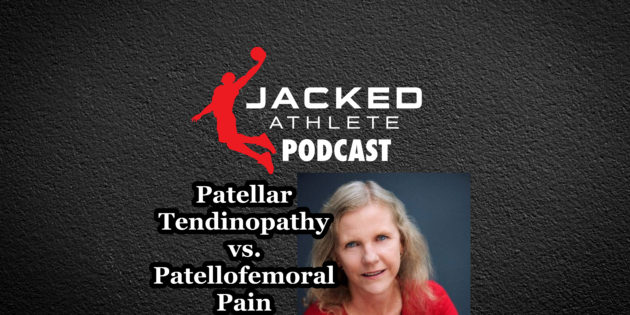https://podcasts.apple.com/us/podcast/jacked-athlete-podcast/id1462537296
Differential Diagnosis
“Pathology is not the cause of pain”
You can’t have both PFP and PT “because they’re completely different loads that initiate them.”
“To get patellar tendinopathy, you have to have really high tendon loads and you won’t get to high tendon loads if you have patellofemoral pain because you actually can’t get through the amount of loading you need because your patellofemoral pain will pull you up way before your patellar tendon does.”
“To get patellar tendinopathy, you have to have a pretty pristine patellofemoral joint.”
“You can’t get patellar tendinopathy with relatively low loads.”
“Don’t rely on palpation. It doesn’t actually tell you anything. It tends to lead you astray.”
“People want to have patellar tendinopathy. It’s a reflection of your athletic status.”
Pain that “spreads down the tendon, so it starts at the inferior pole of the patella and spreads down the tendon… clinicians think that’s tendinopathy… but it’s not… that will be patellofemoral.”
“Patellofemoral taping will help patellofemoral joint. Isometrics will help patellar tendon.”
“If you try to put somebody with patellofemoral pain into a heavy load isometric leg extension, they don’t even get through the first set. They can’t tolerate that sort of loading.”
“It’s about tweaking the program. Strength still remains really important in patellofemoral pain… much more of our focus on getting hip working… changing foot posture can make a difference.”
Patellofemoral pain is “much more about the kinetic chain than it is specifically about the quad. Whereas the patellar tendon tends to be about get the quad strong.”
“We can just bang load on a tendon whereas patellofemoral pain we have to tip-toe through the rehab a bit.”
“Once you’ve got reasonable mechanics and good strength that your chances of a flare in the patellofemoral joint are much less.”
“Tendon pain gets better as you do your activity… it’s the cool-down, day after pain that’s really the problem. With patellofemoral pain it tends to be in-session pain, that night pain, and not so bad the next day.”
Decline Board Squat
Patellofemoral pain “people can get to 30, 40, 50 degrees and they’ll have really poor hip control usually and they’ll have 4 or 5 out of 10 pain.”
“People with patellar tendinopathy will get really high levels of pain very early in range. So they’ll get to about 20 degrees, their pain willl be 7 or 8 out of 10 and they cannot go any further.”
As soon as a patellar tendinopathy bends their knee “instantly high levels of pain.”
Young Kids
“It appears that the maturation of the tendon attachment to bone is the important thing and if you disrupt that at either end, you never recover normal structure.”
Tendinopathy on the Tibial Attachment
“They tend to be more resistant.”
“It’s much more vulnerable to deep knee flexion.”
“We often find working Tibialis Anterior helps them.”
Quadriceps Tendinopathy
“Quadriceps tendinopathy is very much a load accumulation disease.”
“It will tend to be in an older athlete.”
“You’re not going to see it in a 20-year old. You’re going to see it in a 30- to 35-year old more likely.”
Sprinting
“Sprinting is not high patellar tendon load once you’re out of the blocks.”
“Why don’t we see elite sprinters with patellar tendinopathy? We don’t.”
Tendon Pain
“If the tendon has any pain at all, change something immediately.”
“If I would say one thing on tendon pain is: act on it immediately.”
“Don’t leave a tendon crying out for ages before you act.”
“Divide your group into tendinopaths and non. Really control the loads in your tendinopaths and let the other ones run free.”
Nutrition
Patellar tendinopathy: “The area of pathology is half the size of the tip of my finger… Have a steak once a month, you’re going to have enough collagen in that.”
Tendon Turnover
“The metabolic rate of tendon pathology is 25 times higher than normal tendon… abnormal tendon cells are very active, they turnover tissue. But they don’t structure it in a matrix that’s going to be load-bearing.”
“Pathology has no structure… so you can’t put a load through that cell.”
Email: J.Cook@latrobe.edu.au
Twitter: https://twitter.com/ProfJillCook



